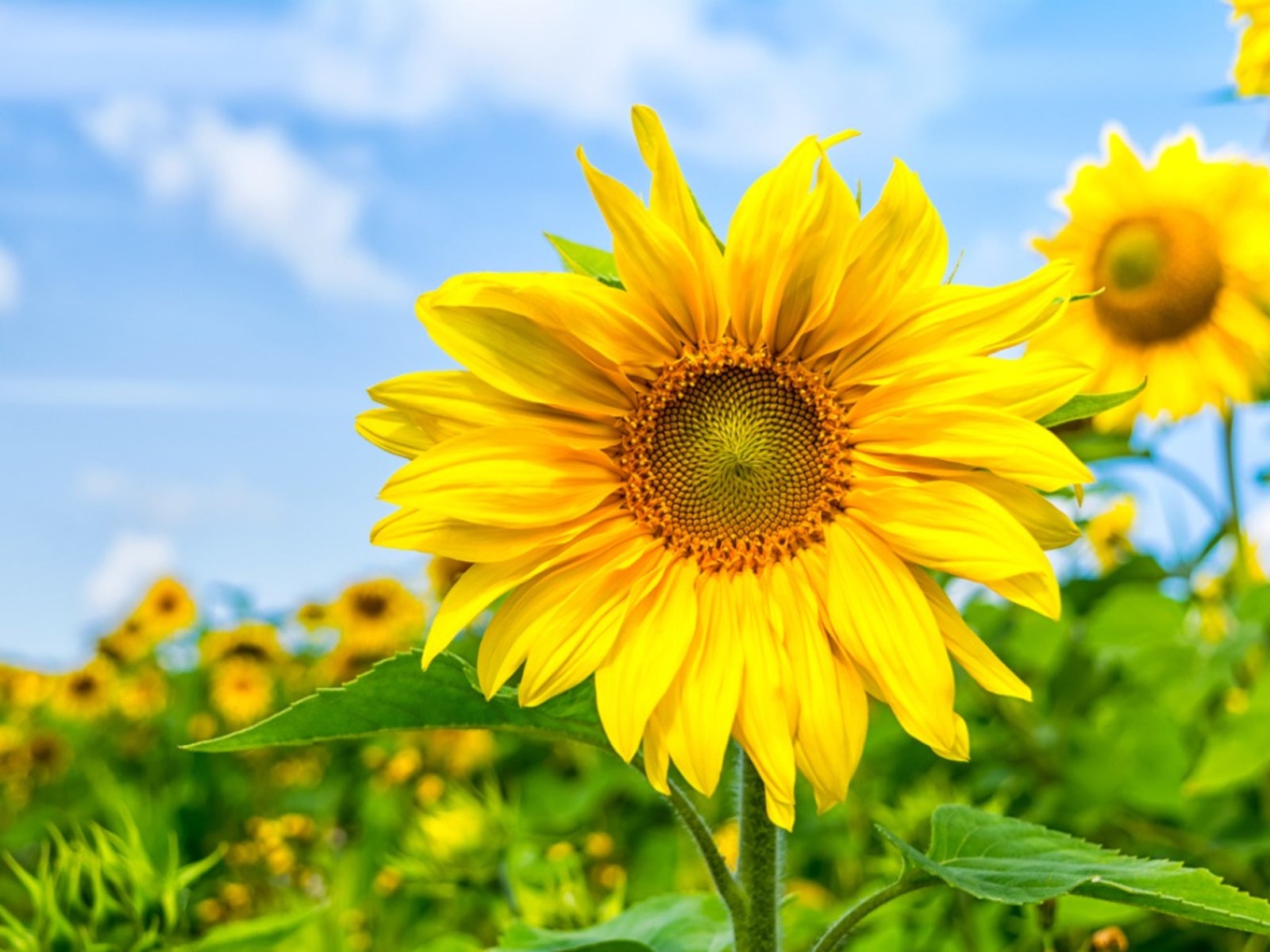Sunflower Plants - Growing Sunflowers in Your Garden


Sunflowers (Helianthus annuus) are perhaps one of the easiest flowers you can grow in the garden. They are so easy to grow that they are frequently used to introduce very young gardeners to the joys of gardening. Many gardeners fondly remember planting the black and white seeds of giant sunflowers and watching in wonder as they grew to tower into the sky. Just because sunflowers are easy to grow, however, does not mean that they should be dismissed from the grown-up garden. The variety of sunflowers available to the home gardener is absolutely amazing and, as an added bonus, sunflowers can help attract some local birds to your garden.
What Sunflowers Look Like
Sunflowers come in sizes that range from dwarf varieties, which can be as small as a foot and a half (46 cm.) tall, to giant varieties, which grow to be over 12 feet (4 m.) tall. You can find sunflowers in colors from very pale yellows to dark, burgundy reds and all shades of yellow, red, and orange in-between. Sunflowers come in a variety of petal counts too. While the single layer of petals is still the most common, you can find quite a few sunflower varieties with double and teddy bear petal layers. All of these sunflower options ensure that when you add these flowers to your garden, it will be anything but blah.
Information About Adding Sunflowers to Your Garden
If you decide to add sunflowers to your garden, there are a few things you will want to keep in mind. First of all, sunflowers are called sunflowers for a reason. They need sun. Make sure that the location you choose for your sunflowers gets full sun. Second, you do not need to worry about soil too much. Sunflowers are not picky about the conditions of the soil, but they are plants. They will do better in better soil. Third, sunflower seed shells do contain a substance that is toxic to grass. So, you will need to either harvest the sunflower heads before the seeds begin to fall out or you will need to plant your sunflowers in a location where you do not mind any nearby grass being killed. Fourth, keep in mind the height of the sunflower variety you have chosen. A giant, 12 foot (4 m.) variety will end up acting very much like a small tree and may shade surrounding flowers. As mentioned above, sunflowers can help to attract local birds to your garden. When the growing season is coming to a close, you can harvest your sunflower heads and use some of the seeds to feed the birds over winter. You have two options when using sunflower seeds to feed the birds. The first is to simply leave the sunflower heads outside for the birds. This option is the easiest but be warned, the birds will likely make a mess when pulling the seeds out of the sunflower head. Your other option is to remove the seeds from the head and to put them in your bird feeder. This method is a little more work but will be neater in the long run. Also, putting the seeds in a birdfeeder will help to keep your feathered friends safe as the birdfeeder will be up off the ground and out of reach of many predators. So, while you may have fond memories of tall yellow sunflowers that you planted as a child, give this old garden favorite a new try and rediscover the world of sunflowers.
Sign up for the Gardening Know How newsletter today and receive a free copy of our e-book "How to Grow Delicious Tomatoes".

Heather Rhoades founded Gardening Know How in 2007. She holds degrees from Cleveland State University and Northern Kentucky University. She is an avid gardener with a passion for community, and is a recipient of the Master Gardeners of Ohio Lifetime Achievement Award.